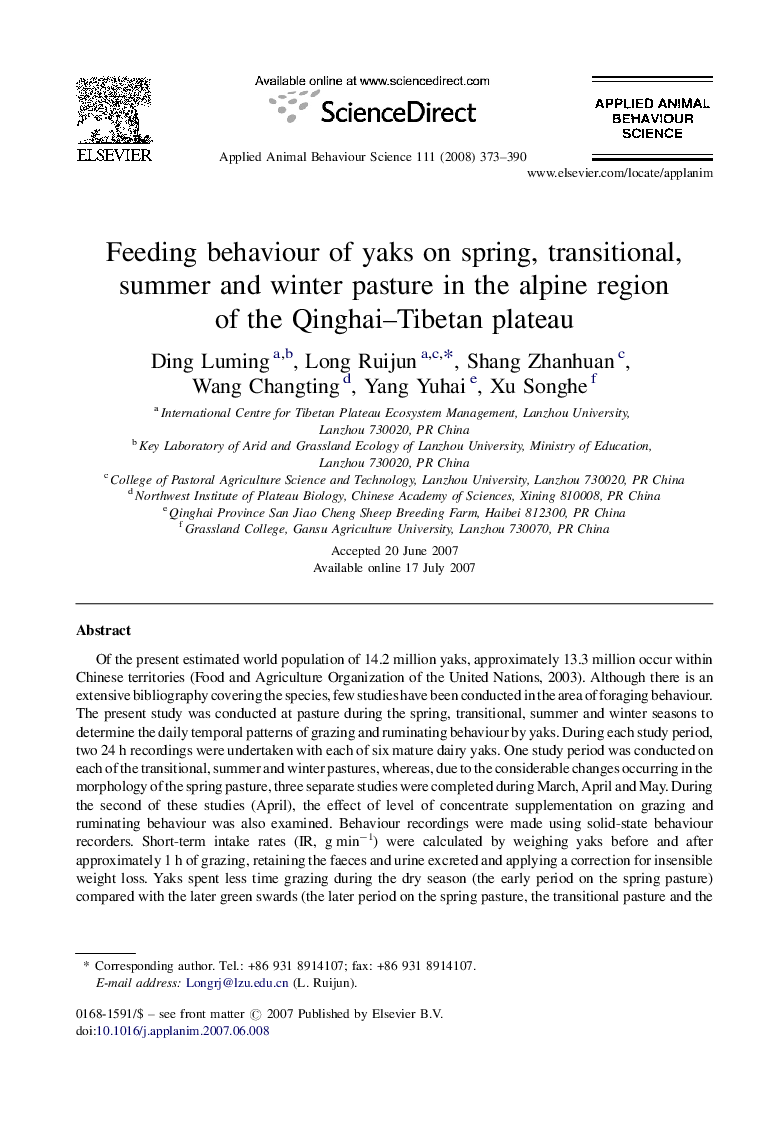| کد مقاله | کد نشریه | سال انتشار | مقاله انگلیسی | نسخه تمام متن |
|---|---|---|---|---|
| 4523774 | 1625422 | 2008 | 18 صفحه PDF | دانلود رایگان |

Of the present estimated world population of 14.2 million yaks, approximately 13.3 million occur within Chinese territories (Food and Agriculture Organization of the United Nations, 2003). Although there is an extensive bibliography covering the species, few studies have been conducted in the area of foraging behaviour. The present study was conducted at pasture during the spring, transitional, summer and winter seasons to determine the daily temporal patterns of grazing and ruminating behaviour by yaks. During each study period, two 24 h recordings were undertaken with each of six mature dairy yaks. One study period was conducted on each of the transitional, summer and winter pastures, whereas, due to the considerable changes occurring in the morphology of the spring pasture, three separate studies were completed during March, April and May. During the second of these studies (April), the effect of level of concentrate supplementation on grazing and ruminating behaviour was also examined. Behaviour recordings were made using solid-state behaviour recorders. Short-term intake rates (IR, g min−1) were calculated by weighing yaks before and after approximately 1 h of grazing, retaining the faeces and urine excreted and applying a correction for insensible weight loss. Yaks spent less time grazing during the dry season (the early period on the spring pasture) compared with the later green swards (the later period on the spring pasture, the transitional pasture and the summer pasture) (P < 0.05). When the forage quality improved, but there was still insufficient mass (the later period on the spring pasture), the yaks extended their grazing time at the expense of other activities. During the early periods on the spring pasture, the short-term IR by yaks was up to 53 g DM min−1, significantly higher than at other times (P < 0.05). The level of concentrate offered had little or no effect on grazing or ruminating time. The total eating time of the yaks offered 0.5 or 1.0 kg concentrate was 2.9 and 4.5 h day−1, respectively, significantly lower than unsupplemented yaks (6.8 h) (P < 0.05). In general, yaks can regulate their foraging behaviour according to the changes of sward conditions in order to achieve optimal grazing strategies.
Journal: Applied Animal Behaviour Science - Volume 111, Issues 3–4, June 2008, Pages 373–390